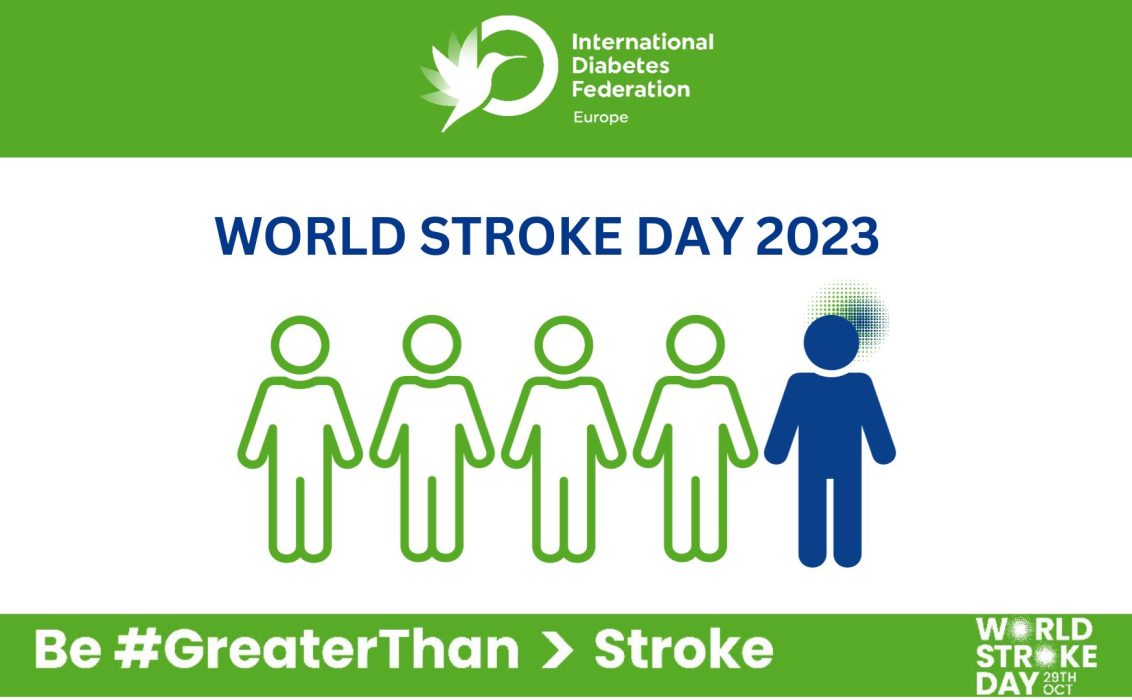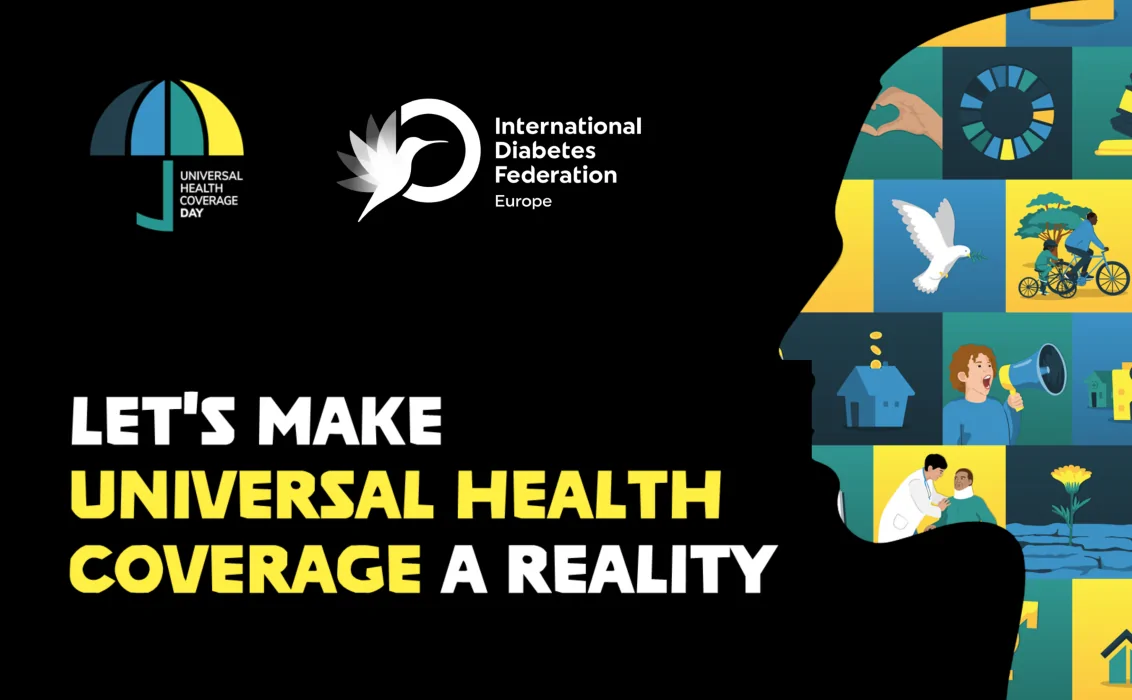Each year on October 29, IDF Europe joins the World Stroke Organisation in raising awareness of strokes. Strokes occur when blood flow to the brain is impeded, either through blood vessel blockage, called an ischemic stroke, or through blood vessel leakage, called a haemorrhagic stroke. The result is the same: the brain is deprived of oxygen, damaging nerve cells, potentially leading to lasting complications and an arduous recovery. While strokes are one of the leading causes of disability, 80% of strokes, according to the WHO, are preventable. This year’s campaign centres on the theme of “Greater than Stroke”, highlighting the role and value of communities coming together to prevent stroke.
Diabetes and Stroke
Diabetes is a root cause of stroke – high blood glucose causes damage to the blood vessels in people with Type 1 Diabetes (T1D) and build-up of plaque in people with Type 2 Diabetes (T2D), both of which can lead to blood clots that can block flow to the brain. Meanwhile, up to 10% of people living with diabetes have a history of stroke. One in three people who live with diabetes are currently undiagnosed, putting them at higher risk of stroke as they are not aware they need manage their risk factors. Risk factors for stroke in people living with diabetes (PwD) include sub-optimal blood glucose levels, high blood pressure, high cholesterol, and obesity.
Optimal management of diabetes as well as management of cholesterol and blood pressure can greatly contribute to lowering the risk of strokes. However, gaining access to the required, uninterrupted, and affordable treatments, screening for complications as well as to timely action when diagnosed still proves difficult in today’s healthcare systems. Education also constitutes a challenge, as PwD require the knowledge to manage their own condition and healthcare professionals also need continuous education regarding the latest guidelines on diabetes care and new developments in the field.
Innovation in Diabetes Care Delivery
Innovative approaches in diabetes care delivery can help overcome these challenges in managing the condition and lowering the risk of strokes. One such approach, social prescribing, and community-based care in general, allows healthcare professionals to connect people living with, or at risk of, developing diabetes to non-clinical services within a community. This aims to improve PwD’s health and well-being by engaging with other people in their community. A broad range of health-related activities, often already available in communities, that could be prescribed include physical activity, arts and crafts as well as different forms of therapies, self-management and education training and other group activities. [1,2]
According to the WHO, studies have shown that social prescribing can reduce the burden on PwD and primary care, reduce the stress of living with a non-communicable disease (NCD), improve cognitive performance and mental well-being, in turn improving the overall quality of life. Additionally, community-based care can help reach underserved and underrepresented communities who might have limited access to healthcare.[1]
Social Prescribing Link Workers
Often integrated within the social prescribing approach, community health workers (CHW), also referred to as link workers, can be a bridge between healthcare professionals (HCPs) and people with NCDs such as diabetes. An HCP who wants to prescribe community-based activities can refer a person to a CHW, who will help identify the needs of the person and link them up to the activities mentioned above. They usually know about the array of community-based activities a given community has to offer and can also take the role of an educator. [1,3]
The role of a CHW can be fulfilled directly by a physician, a health assistant, even an NGO, although it is recommended to have a person specifically trained for this position. One such program by the UK’s NHS showed improved glycemic control and included access community groups.[4]
Our Call to Action
To bend the diabetes curve and ensure that PwD can reduce their risk of diabetes-related complications and improve their quality of life and health outcomes, governments and health authorities need to take action now. We call on them to:
- Invest in research on community-based care
- Encourage social prescribing as a means of improving health related quality of life
- Empower PwD through community engagement to improve self management
- Remove barriers to access to required medicine and treatment for people with diabetes.
- Shift towards integrated, holistic care that takes into account the social determinants of health.
We need to accelerate action in diabetes care and take action to improve diagnosis, improve quality of care and ensure access to treatment in order to prevent complications such as stroke in people with diabetes.
___________________________________________
Sources
[1] WHO – A toolkit on how to implement social prescribing, World Health Organisation, May 20 2022; ISBN 978 92 9061 976 5
[2] Kurpas D, Mendive JM, Vidal-Alaball J, Petrazzuoli F, Morad M, Kloppe T, Herrman W, Mrduljaš-Đujić N, Kenkre J. European Perspective on How Social Prescribing Can Facilitate Health and Social Integrated Care in the Community. Int J Integr Care. 2023 May 5;23(2):13. doi: 10.5334/ijic.7636. PMID: 37151777; PMCID: PMC10162193.
[3] Community nursing, NHS,
https://www.england.nhs.uk/nursingmidwifery/delivering-the-nhs-ltp/community-nursing/#:~:text=Community%20nursing%20provides%20invaluable%20care,not%20have%20a%20secure%20home.
[4] Wildman J, Wildman JM. Evaluation of a Community Health Worker Social Prescribing Program Among UK Patients With Type 2 Diabetes. JAMA Netw Open. 2021;4(9):e2126236. doi:10.1001/jamanetworkopen.2021.26236



